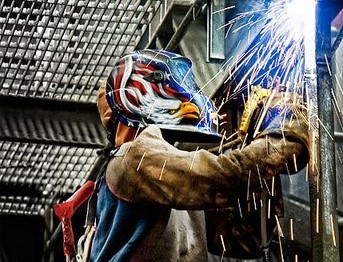As the economy begins to recover in 2022, there will be many openings available in manufacturing, maintenance and repairs, and construction. Aging infrastructure will push the development of new buildings, bridges, and roads—all requiring the expertise of welders, welding inspectors, and engineers.
Just how much demand will there be for welders?
Heading into next year, the U.S. Bureau of Labor Statistics projects there will be nearly 400,000 welders, solderers, cutters, and brazers employed across the country. These manufacturing jobs span a wide range of industries: metal, transportation, machinery, architecture, structural, and construction.
A job in the welding industry can offer a rewarding career and there are different paths that you can take to break into the welding industry.
Technical, Community College & Universities
There are many schools and institutions across the country that offer welding programs. Coursework will consist of numerous mathematics and general education courses, and then transition into welding technology. It’s a good idea to research the different types of welding jobs and your specific interests before committing to a program, as positions may require different training and certifications. Depending how far you want to take your education, students can obtain an Associate’s, Bachelor’s, or Master’s degree in welding technology.
Apprenticeship
This is one of the best ways to start off your welding career. Most apprenticeships will require you to have at least a high school diploma or GED. An apprenticeship is a great way to begin practicing needed skills in a real-world environment, getting hands on experience, all with the mentorship of an industry expert. Programs will vary, but you can expect them to require over 100 hours of classroom training and 3 to 4 years of on the job training. Apprenticeships are available through various outlets such as unions and vocational schools. The U.S Department of Labor also has resources to help assist with these opportunities.
Some jobs require that an applicant pass a welding exam to gain employment. Most welding exams consist of classroom testing followed by a hands-on welding test such as a guided bend test. This is a common test used to certify a welder for work. Not all welding jobs will require a formal degree or certification, but it could help to lock down your desired position and advance your career moving forward.
Check out this video to see a guided bend test:
AWS Certification
A welding certification can boost your career, increase your earning potential over the life of your career, and position you for better opportunities. The AWS offers a wide range of certifications, depending on which direction you want to take your career. Some common AWS certifications:
- Certified Welder Program
- Certified Welding Inspector
- Certified Welding Engineer
- Certified Welding Educator
- Certified Welding Supervisor
Learn more about the AWS’s certifications at their official website.
https://www.aws.org/certification/page/home
Opportunities for Military Personnel
Programs are available to help members of our military transition from careers in defense to civilian manufacturing jobs.
Any veterans looking to transition into a civilian career in the welding industry can find assistance at Careersinwelding.com/veterans
Welding Education Resources



